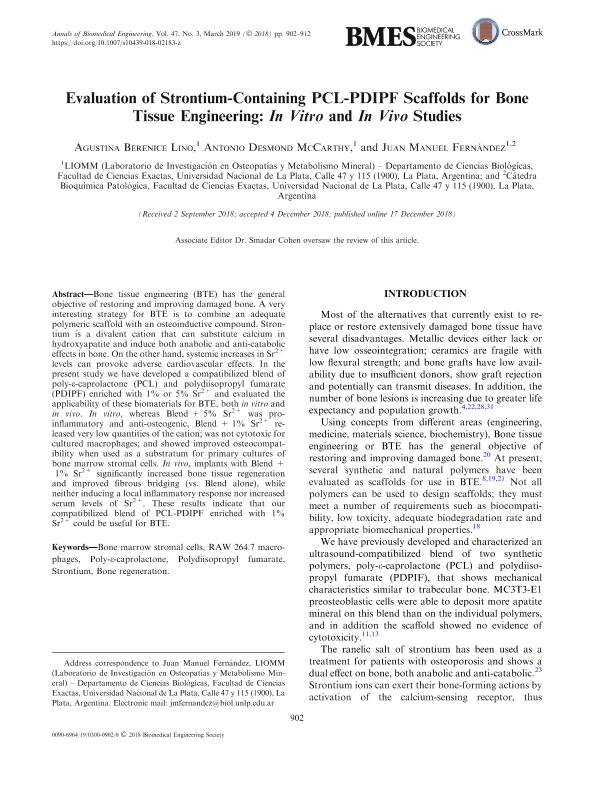Artículo
Evaluation of strontium-containing PCL-PDIPF scaffolds for bone tissue engineering: In vitro and in vivo studies
Fecha de publicación:
12/2018
Editorial:
Springer
Revista:
Annals Of Biomedical Engineering
ISSN:
0090-6964
Idioma:
Inglés
Tipo de recurso:
Artículo publicado
Clasificación temática:
Resumen
Bone tissue engineering (BTE) has the general objective of restoring and improving damaged bone. A very interesting strategy for BTE is to combine an adequate polymeric scaffold with an osteoinductive compound. Strontium is a divalent cation that can substitute calcium in hydroxyapatite and induce both anabolic and anti-catabolic effects in bone. On the other hand, systemic increases in Sr 2+ levels can provoke adverse cardiovascular effects. In the present study we have developed a compatibilized blend of poly-ε-caprolactone (PCL) and polydiisopropyl fumarate (PDIPF) enriched with 1% or 5% Sr 2+ and evaluated the applicability of these biomaterials for BTE, both in vitro and in vivo. In vitro, whereas Blend + 5% Sr 2+ was pro-inflammatory and anti-osteogenic, Blend + 1% Sr 2+ released very low quantities of the cation; was not cytotoxic for cultured macrophages; and showed improved osteocompatibility when used as a substratum for primary cultures of bone marrow stromal cells. In vivo, implants with Blend + 1% Sr 2+ significantly increased bone tissue regeneration and improved fibrous bridging (vs. Blend alone), while neither inducing a local inflammatory response nor increased serum levels of Sr 2+ . These results indicate that our compatibilized blend of PCL-PDIPF enriched with 1% Sr 2+ could be useful for BTE.
Archivos asociados
Licencia
Identificadores
Colecciones
Articulos(CCT - LA PLATA)
Articulos de CTRO.CIENTIFICO TECNOL.CONICET - LA PLATA
Articulos de CTRO.CIENTIFICO TECNOL.CONICET - LA PLATA
Citación
Lino, Agustina Berenice; McCarthy, Antonio Desmond; Fernández, Juan Manuel; Evaluation of strontium-containing PCL-PDIPF scaffolds for bone tissue engineering: In vitro and in vivo studies; Springer; Annals Of Biomedical Engineering; 47; 3; 12-2018; 902-912
Compartir
Altmétricas




